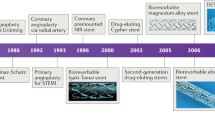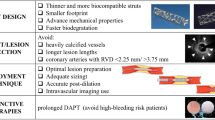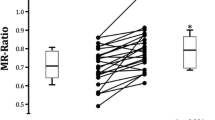Abstract
The purpose of this study is to contribute to the design and development by analyzing the expected mechanical behavior of bioresorbable scaffolds. Bioresorbable scaffolds are a type of medical device ‘stent’ that treats heart disease by physically removing plaque inside the coronary arteries. Unlike conventional metal-based stents, bioresorbable scaffolds are manufactured using polymeric materials that achieve dissolution properties within 1-2 years in vivo through hydrolysis with blood. Thus, bioresorbable scaffolds have the advantage of reducing postoperative side effects. However, due to the mechanical properties of the polymeric materials used, bioresorbable scaffolds are currently only applied to simple lesions. In particular, for branched lesions that separate from one main vessel into two branched vessels, the stenting procedures are still being studied through various clinical trials, but there are not many reports of studies and results through interpretation. A provisional stent method of placing a single stent in the blood vessel is commonly used to treat branched lesions. Since the diameter of the blood vessel before and after the branching is different, the selection of the stent diameter is applied as the first step before the stent operation. Conventional metal-based stent operations do not require this consideration, but it is needed for bioresorbable scaffolds due to the low tensile strength of the polymeric material. In this study, temporary stents with two different diameter bioresorbable scaffolds corresponding to the diameter of the main vessel at both ends were evaluated using the calculation method. In this study, these two stents with different diameters were compared in terms of device failure and damage to the inner wall of the blood vessel.
Similar content being viewed by others
Abbreviations
- γj :
-
Deviatoric stretch
- D d :
-
Distal diameter
- D p :
-
Proximity diameter of the main vessel
- D s :
-
Side branch diameter
- J :
-
Volumetric strain
References
D. Regazzoli, P. P. Leone, A. Colombo and A. Latib, New generation bioresorbable scaffold technologies: An update on novel devices and clinical results, Journal of Thoracic Disease, 9 (S9) (2107) 79–85.
J. S. Bergstrom and D. Hayman, An overview of mechanical properties and material modeling of polylactide (PLA) for medical applications, Annals of Biomedical Engineering, 44 (2) (2016) 330–340.
M. J. Kern, M. J. Lim and P. Sorajja, The Interventional Cardiac Catheterization Handbook, 4th Ed., Elsevier, Philadelphia, PA (2018).
J. F. Lassen, N. R. Holm, A. Banning, F. Burzotta, T. Lefevre, A. Chieffo and G. Stankovic, Percutanous coronary intervention for coronary bifurcation disease: 11th consensus document from the European Bifurcation Club, Eurolntervention, 12 (2016) 38–46.
R. G. Pauck and B. D. Reddy, Computational analysis of the radial mechanical performance of PLLA coronary artery stents, Medical Engineering and Physics, 37 (1) (2015) 7–12.
Y. Huo and G. S. Kassab, A scaling law of vascular volume, Biophysical Journal, 96 (2) (2009) 347–353.
Y. Huo, G. Finet, T. Lefevre, Y. Louvard, I. Moussa and G. S. Kassab, Which diameter and angle rule provides optimal flow patterns in a coronary bifurcation?, Journal of Biomechanics, 45 (7) (2012) 1273–1279.
G. A. Holzapfel, T. C. Gasser and R. W. Ogden, A new constitutive framework for arterial wall mechanics and a comparative study of material models, Journal of Elasticity and the Physical Science of Solids, 61 (1-3) (2000) 1–48.
G. A. Holzapfel, G. Sommer, C. T. Gasser and P. Regitnig, Determination of layer-specific mechanical properties of human coronary arteries with nonatherosclerotic intimal thickening and related constitutive modeling, American Journal of Physiology-Heart and Circulatory Physiology, 289 (5) (2005) 2048–2058.
Y. Louvard, M. Thomas, V. Dzavik, D. Hildick-Smith, A. R. Galassi, M. Pan and I. Sheiban, Classification of coronary artery bifurcation lesions and treatments: Time for a consensus!, Catheterization and Cardiovascular Interventions, 71 (2) (2008) 175–183.
R. W. Ogden, Large deformation isotropic elasticity-on the correlation of theory and experiment for incompressible rubberlike solids, Proceedings of the Royal Society A, 326 (1567) (1972) 565–584.
H. Zahedmanesh and C. Lally, Determination of the influence of stent strut thickness using the finite element method: Implications for vascular injury and in-stent restenosis, Medical and Biological Engineering and Computing, 47 (4) (2009) 385.
H. M. Loree, A. J. Grodzinsky, S. Y. Park, L. J. Gibson and R. T. Lee, Static circumferential tangential modulus of human atherosclerotic tissue, Journal of Biomechanics, 27 (2) (1994) 195–204.
J. Bukala, P. Kwiatkowski and J. Malachowski, Numerical analysis of stent expansion process in coronary artery stenosis with the use of non-compliant balloon, Biocybemetics and Biomedical Engineering, 36 (1) (2016) 145–156.
F. Ju, Z. Xia and K Sasaki, On the finite element modelling of balloon-expandable stents, Journal of the Mechanical Behavior of Biomedical Materials, 1 (1) (2008) 86–95.
R. Naseem, L. Zhao, Y. Liu and V. V. Silberschmidt, Experimental and computational studies of poly-L-lactic acid for cardiovascular applications: Recent progress, Mechanics of Advanced Materials and Modern Processes, 3 (1) (2017) 13.
Acknowledgments
This study was supported by the Research Fund of Seoul St. Mary’s Hospital, the Catholic University of Korea.
Author information
Authors and Affiliations
Corresponding author
Additional information
Recommended by Editor Chongdu Cho
Jang Yong Kim is a Professor of the College of Medicine, The Catholic University of Korea, Seoul, Korea. He received his Ph.D. in Medical Science from Inha University. His research interests include the stent design and clinical evaluation of cardiovascular stent.
Pruthvi Serrao worked as an Assistant Professor at the Department of Mechanical Engineer, St Joseph Engineering College, Mangaluru, India. He is currently working as a visiting engineer at the R&D Department of CoETEC Co Ltd., Seoul, Korea on design and development of polymers for biomedical applications.
Rights and permissions
About this article
Cite this article
Kim, J.Y., Park, S. & Serrao, P. Effect of over/under-expanding on the mechanical behavior in provisional stenting using bioresorbable scaffold. J Mech Sci Technol 34, 2371–2376 (2020). https://doi.org/10.1007/s12206-020-0514-8
Received:
Revised:
Accepted:
Published:
Issue Date:
DOI: https://doi.org/10.1007/s12206-020-0514-8




